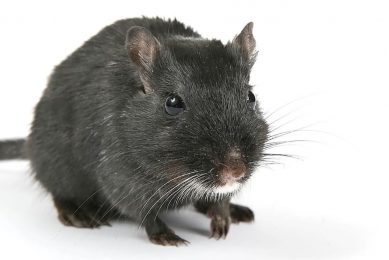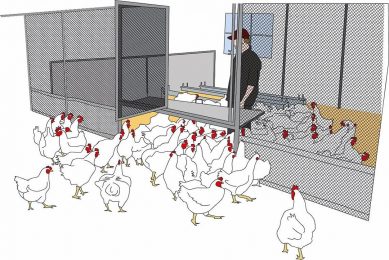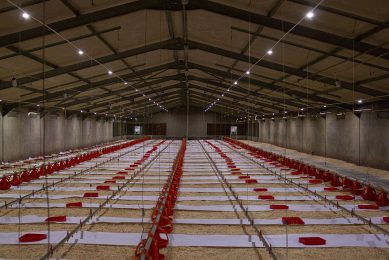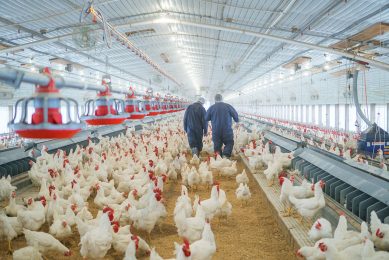Supporting skeletal frame development in breeders
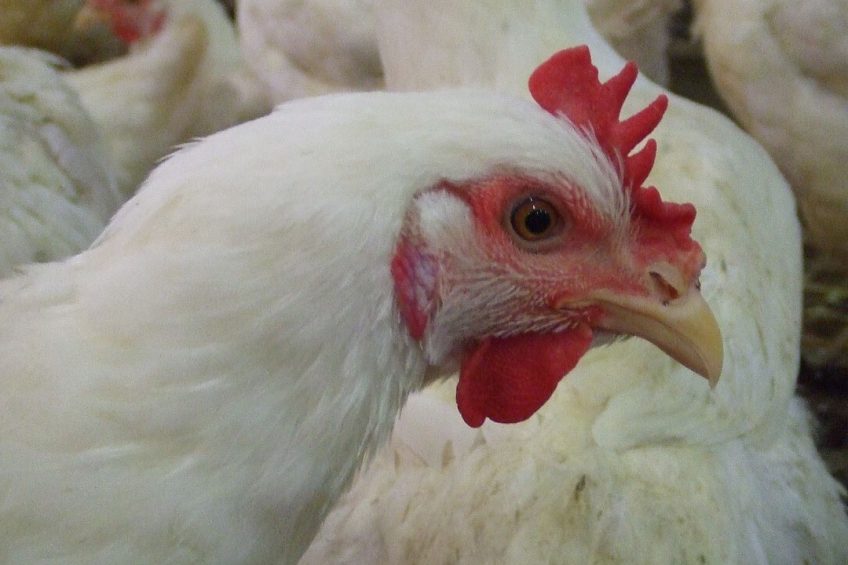
There appears to be a clear relationship between early frame and structural bone development that can explain later issues with female tendon rupture and central curled toes in males during the early production period. To maximise liveability and productivity in meat type parent stock, farm management needs to be sharp on uniform bodyweights and support skeletal frame development by interventions described below.
Uniformity can rapidly decrease during the first week as chicks are recovering from stresses such as transport and sexing. Uniformity may also decrease if chicks are sourced from more than one grandparent flock. Farm management must take into account these factors and provide chicks with the best start possible. As tendon and toe issues tend to be impacted, especially in underdeveloped chicks, keeping flock uniformity as high as possible can reduce the incidence of tendon and toe issues and, in turn, improve bird health, welfare, and productivity.
Crucial first week
The first week of development is very important and appears to have much more influence on the total development of the birds than we often realise. Here are some observations on structural development born from field experience that could explain some causes of tendon and toe issues. In the first week, if the entire female flock is too light (average 100 g to 110 g or 75% of standard weight) the flock usually contains a group of chicks in the 70 g to 80 g weight range (50% of standard weight). These extremely light chicks are more susceptible to poor frame and tendon development. Likewise, the incidence of central curled toes increases in males with low bodyweight at 7 days. This becomes more evident after 18 weeks of age and during the production period when more weight is placed on both the legs and toes. Leg and toe issues are even more pronounced with over weight males during production. If bodyweight deficiencies in these females and males are recovered by 8 weeks, they can still achieve proper frame development. However, problems with low bodyweight in the first week must be corrected for subsequent flocks by improving reception management issues including drinker and feeder space, heating, and proper ventilation.
Separate lower weight individuals
During the first 4 weeks of rearing, average to heavy females tend to maintain uniformity through rearing because they are capable of competing with each other. The females with below average bodyweight have difficulty maintaining uniformity due to lower appetites and poor competitive behaviour. For this reason, some companies separate the lower weight females into super small and small groups to recover the small females faster. In addition to leg issues, these 2 groups are also susceptible to feathering issues and higher culling and mortality rates in rearing. If these light weight females are not recovered with compensatory growth during the first 5 to 8 week period, they tend to have both smaller frames and shorter tibias, with lower mineralisation rates at the onset of production. Furthermore, they tend to have oversized breasts on a small frame that can create leg and tendon issues which will greatly affect liveability.

In smaller-framed females, tendon development and bone elasticity become important factors concerning the occurrence of tendon rupture. In some cases, it is clearly the light weight females with increased incidences, while in other cases, seemingly average or heavier females are more affected. The occurrence of tendon rupture appears to depend heavily on the initial 4-week development of females and the frame uniformity of the entire flock in the initial 8 weeks. This is often the reason why no clear cause can be attributed to gastrocnemius tendon rupture in the production period.
Hens that are reared with the correct metabolizable energy (ME) to digestible lysine ratios in the starter and grower diets obtain better fleshing and have stronger, correctly developed elastic bones. These hens are able to adjust to excess bodyweight in production without having leg issues including valgus-varus and/or tendon rupture.
To prevent males from developing central curled toes in late rearing (primarily after 15 weeks) and in production, males need good, long-bone elasticity and proper toe development in early rearing, as well as proper frame structure. Males with poor bone elasticity will be prone to leg deviations. Placing more weight on deviated legs can increase curled toe issues in production. However, curled toe issues can occur in both low and excess bodyweight males. This is because poor bone elasticity can cause inflammation and fibrosis in the tendons, which will predispose the birds to higher incidences of tendon rupture or curled toes in rearing or early production.
Conclusions
The above information supports Cobb’s current concepts of how to rear Cobb females and males as well as the need to implement the management criteria in the following list to obtain top quality pullets and males at the start of production. These criteria are critical to prevent leg and toe issues in early production in grandparent and parent stock females and males.
Apply the Cobb nutritional specifications that align with the bodyweight and feeding curve to ensure the proper preparation of both females and males.
- Always use a good starter or pre-starter micro-pellet or good quality crumble. This will promote excellent chick uniformity in the first week. In general, many producers do not focus enough on chick development in the first week.
- Consider grading with a minimum of 3 groups (heavy, medium and light) at 7 to 10 days and repeat between 3 and 4 weeks of age if you notice tendon rupturing in females or curled toes in males.
- Recovery of the low weight females is particularly important since they are the most vulnerable and tend to remain smaller in frame size, uniformity, and development. Keep any recovered, low weight females separated from the rest of the flock until transfer. They can be segregated in pens or moved to a separate house, depending on the number of females.
- Follow the Cobb female 500 Fast Feather/Slow Feather and Cobb 700 standard bodyweight of 145 g at 7 days and 520 g to 550 g at 4 weeks of age to ensure good early development. Follow an established weekly feeding curve in rearing that you know works under your local conditions. Use this feeding curve and only adjust with small feed amounts over or under this feeding table if bodyweight starts deviating too much. However, before adjusting feed amounts, ensure that bodyweights are being measured correctly.
- Have all weight groups at 8 weeks very close to the bodyweight standard (98% to 102%).
- Practice at least 2 selections of suboptimal males in rearing at 4 weeks and 12 weeks. The objective is to achieve greater than 95% top-quality males at 20 weeks of age, having uniform frames and comb development.
Please refer to the Cobb Management Guides and Product Supplements for all management and feeding specifications. Your Cobb technical representative is also available to answer any questions and help you develop and optimise your management programmes.
Author:
Winfridus Bakker, Cobb



